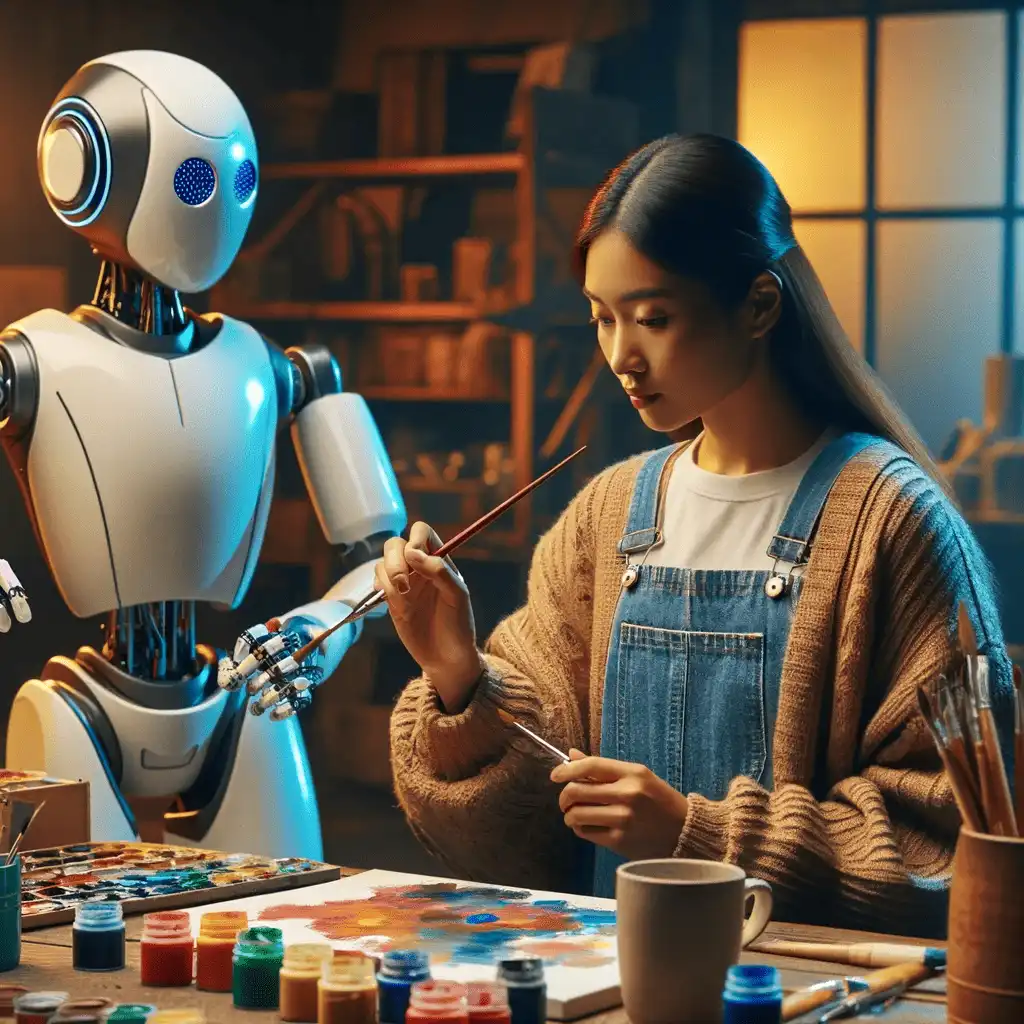Re-Creation of Artwork in the Age of Artificial Intelligence; From Redefining the Author to the Birth of a New Experience
On Saturday, May 24, 2025, an important session was held within the framework of the conference "Artificial Intelligence: Human-Machine Communications and Future Perspectives," during which Dr. Eghbal Khaledian, a doctoral communications researcher, presented deep insights on the impacts of artificial intelligence on the nature and function of art. His presentation was titled "Artwork in the Age of Artificial Intelligence: Authenticity and Transformation in the Digital Era," where he philosophically examined fundamental issues such as the concept of authenticity, the role of the author, and the position of the audience within the context of technological changes.
Artificial Intelligence; Beyond a Tool, the New Language of Creation
At the beginning of his lecture, Khaledian posed the fundamental question of whether artificial intelligence should be considered merely a tool for creation or a new language that transforms the foundations of art. According to him, most discussions in this field are either caught in extreme pessimism or tend toward absolute optimism.
He said, "There are concerns that the human identity of art might be lost, while others believe that essences such as emotion, music, and film will never disappear. But perhaps it is time to consider artificial intelligence as a new mode of creative expression, not merely a mechanical tool."
Disappearance of the "Aura" or Birth of a New Authenticity?
Khaledian continued by referring to Walter Benjamin’s famous theory on “The Work of Art in the Age of Mechanical Reproduction,” asking: “Now that creation without direct human author intervention is possible, what definition of authenticity remains?” He suggested that instead of a traditional concept of authenticity, we might need to consider a kind of “interactive authenticity” — one that emerges through the interaction between the artwork, the machine, and the audience.
Artist; Erased or Recreated?
Khaledian critically examined the role of the artist in this new era. In his view, artificial intelligence is not necessarily a threat to the artist but transforms their role. "The machine is not a replacement but a collaborator with humans in the creative process. In this case, the artist is no longer the sole creator of the work but plays a participatory and facilitative role."
This perspective, contrary to the stereotypical narratives of the artist’s extinction, emphasizes the beginning of a new form of creation; a collaborative creation interacting with algorithms.
Audience; from Viewer to Creator of Meaning
In another part of his presentation, Khaledian pointed to the role of the audience in this new ecosystem: “Today’s audience is not just a receiver of messages but also participates in creating meaning and interpreting the work. Sometimes, they even interact with the machine.”
He illustrated, with examples of artworks created by artificial intelligence—such as a portrait generated by an algorithm that sold at Christie’s auction in 2018—that the boundary between human and artificial art is collapsing.
Four Dimensions of Transformation in Contemporary Art
Khaledian structured his perspective around four analytical axes as follows:
-
Authenticity in the Digital Age:
In the era of artificial intelligence, artwork has transcended the constraints of place and time. In this context, authenticity is no longer an inherent trait but a result of cultural and social interactions and engagement with the audience. -
From Reproduction to Digital Creation:
He believes that artificial intelligence has now moved beyond mere repetition and reproduction and has entered the realm of independent creation. -
Transformation of the Artist’s Role:
The artist, instead of having an absolute role in creation, has become a kind of collaborator who produces the work alongside artificial intelligence. -
Audience as an Active Agent:
The audience is not only a receiver but also a selector, meaning-maker, and even a co-creator in the artistic experience.
چشماندازی تازه برای هنر آینده
At the end of his speech, Khaledian emphasized the need to approach the future of art in the digital age with flexibility. According to him, the new era is not a sign of the end of art but rather a promise of the birth of a new kind of art.
He concluded: "Today's artwork is the result of a living connection between humans, machines, and society. If art wants to survive this transformation, we must reconsider its fundamental concepts—from authenticity to creativity."


